Florian Block
Beyond the Meta: Leveraging Game Design Parameters for Patch-Agnostic Esport Analytics
Jun 05, 2023



Abstract:Esport games comprise a sizeable fraction of the global games market, and is the fastest growing segment in games. This has given rise to the domain of esports analytics, which uses telemetry data from games to inform players, coaches, broadcasters and other stakeholders. Compared to traditional sports, esport titles change rapidly, in terms of mechanics as well as rules. Due to these frequent changes to the parameters of the game, esport analytics models can have a short life-spam, a problem which is largely ignored within the literature. This paper extracts information from game design (i.e. patch notes) and utilises clustering techniques to propose a new form of character representation. As a case study, a neural network model is trained to predict the number of kills in a Dota 2 match utilising this novel character representation technique. The performance of this model is then evaluated against two distinct baselines, including conventional techniques. Not only did the model significantly outperform the baselines in terms of accuracy (85% AUC), but the model also maintains the accuracy in two newer iterations of the game that introduced one new character and a brand new character type. These changes introduced to the design of the game would typically break conventional techniques that are commonly used within the literature. Therefore, the proposed methodology for representing characters can increase the life-spam of machine learning models as well as contribute to a higher performance when compared to traditional techniques typically employed within the literature.
Time to Die: Death Prediction in Dota 2 using Deep Learning
May 21, 2019
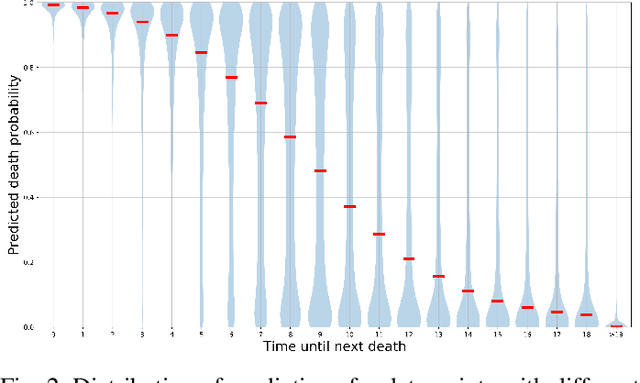
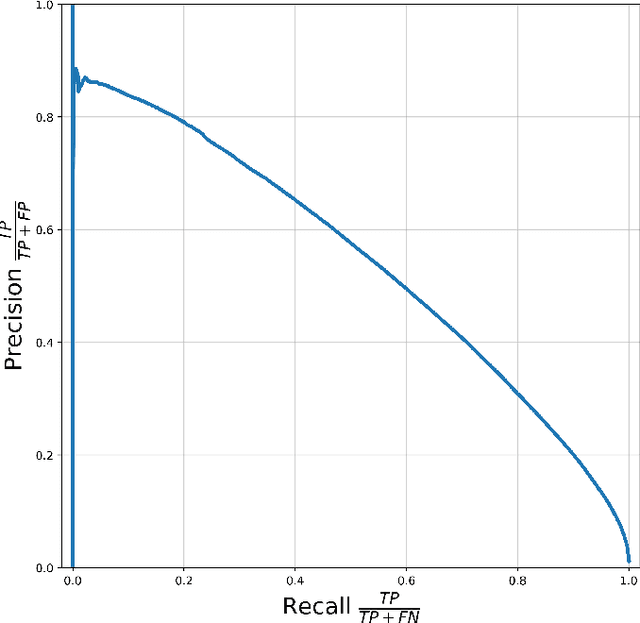
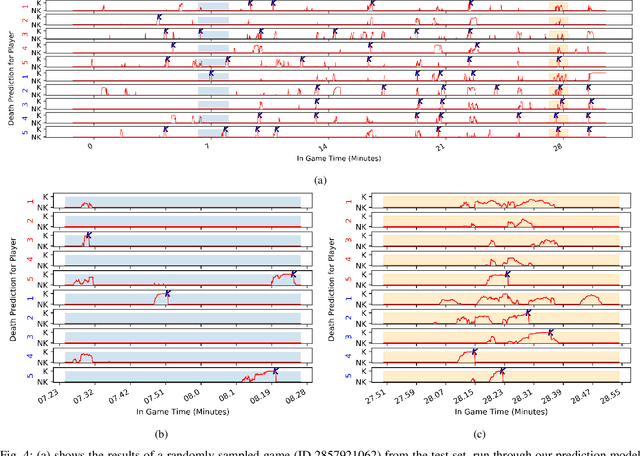
Abstract:Esports have become major international sports with hundreds of millions of spectators. Esports games generate massive amounts of telemetry data. Using these to predict the outcome of esports matches has received considerable attention, but micro-predictions, which seek to predict events inside a match, is as yet unknown territory. Micro-predictions are however of perennial interest across esports commentators and audience, because they provide the ability to observe events that might otherwise be missed: esports games are highly complex with fast-moving action where the balance of a game can change in the span of seconds, and where events can happen in multiple areas of the playing field at the same time. Such events can happen rapidly, and it is easy for commentators and viewers alike to miss an event and only observe the following impact of events. In Dota 2, a player hero being killed by the opposing team is a key event of interest to commentators and audience. We present a deep learning network with shared weights which provides accurate death predictions within a five-second window. The network is trained on a vast selection of Dota 2 gameplay features and professional/semi-professional level match dataset. Even though death events are rare within a game (1\% of the data), the model achieves 0.377 precision with 0.725 recall on test data when prompted to predict which of any of the 10 players of either team will die within 5 seconds. An example of the system applied to a Dota 2 match is presented. This model enables real-time micro-predictions of kills in Dota 2, one of the most played esports titles in the world, giving commentators and viewers time to move their attention to these key events.
Win Prediction in Esports: Mixed-Rank Match Prediction in Multi-player Online Battle Arena Games
Nov 17, 2017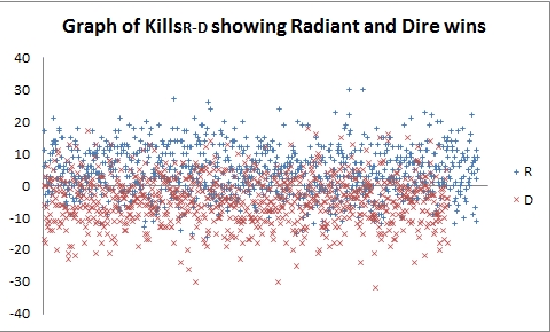
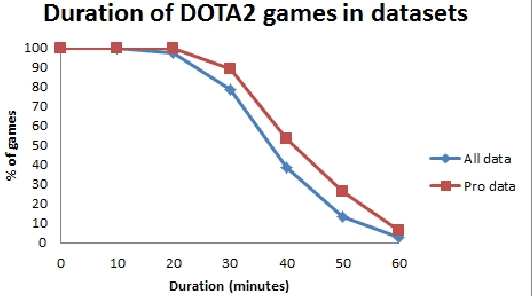
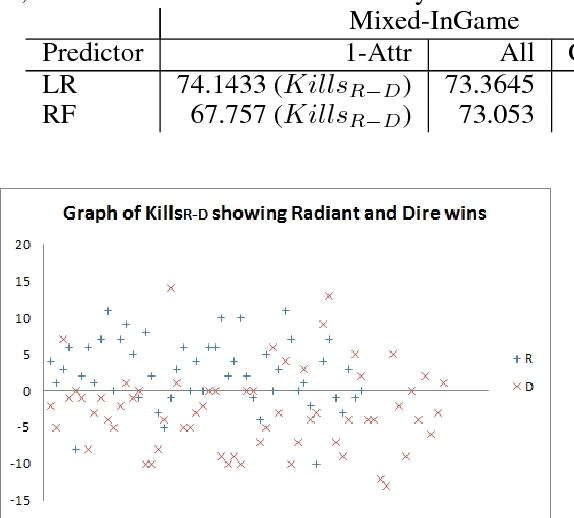
Abstract:Esports has emerged as a popular genre for players as well as spectators, supporting a global entertainment industry. Esports analytics has evolved to address the requirement for data-driven feedback, and is focused on cyber-athlete evaluation, strategy and prediction. Towards the latter, previous work has used match data from a variety of player ranks from hobbyist to professional players. However, professional players have been shown to behave differently than lower ranked players. Given the comparatively limited supply of professional data, a key question is thus whether mixed-rank match datasets can be used to create data-driven models which predict winners in professional matches and provide a simple in-game statistic for viewers and broadcasters. Here we show that, although there is a slightly reduced accuracy, mixed-rank datasets can be used to predict the outcome of professional matches, with suitably optimized configurations.
 Add to Chrome
Add to Chrome Add to Firefox
Add to Firefox Add to Edge
Add to Edge